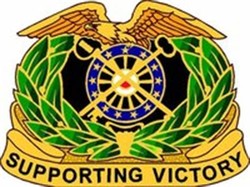
Quartermaster peregrin professional#
Īs the complexities of the Army and its material increased, an officer with greater professional technical knowledge of the problems that surround stores management was required for the Quartermaster's duties. Until recent times, the British Army almost invariably rewarded an outstanding RSM by appointing him quartermaster of his battalion, thus ensuring the unit an experienced officer who knew the unit thoroughly and would prove difficult to mislead or beguile. In that year, the position was replaced by the new appointment of troop sergeant major, with the cavalry adopting commissioned, regimental quartermasters as described above.įrom Royal Canadian Ordnance Corps standing orders:įor many centuries – indeed perhaps as long as there have been organized military units – the appointment of quartermaster has been significant in armies. Traditionally, the quartermaster had previously served as RQMS and then regimental sergeant major (RSM) of the unit of which he later became quartermaster.įrom at least the English Civil War period until 1813, the quartermaster was the senior NCO in a British cavalry troop, in which context he had nothing to do with supply. Units which specialize in supply are known as "supply" units, not "quartermaster" units, and their personnel as suppliers or logistics specialists ("log specs"). The QM, RQMS and storemen are drawn from the regiment or corps in which they work, not from the Royal Logistic Corps (formerly the Royal Army Service Corps and then the Royal Army Ordnance Corps/ Royal Corps of Transport), which is responsible for issuing and transporting supplies to them. The quartermaster is assisted by the regimental quartermaster sergeant (RQMS) (and the technical quartermaster by the technical quartermaster sergeant (TQMS)) and a staff of storemen. Some units also have a technical quartermaster, who is in charge of technical stores. By longstanding tradition, they are always commissioned from the ranks and hold the rank of captain or major (although until the 20th century the quartermaster was usually a lieutenant). In the British Army and Royal Marines, the quartermaster (QM) is the commissioned officer in a battalion or regiment responsible for supply. In the 17th century, it started to be used in various militaries in the sense of organizing supplies. The term began to refer to army officers in English around 1600.įor land armies, the term was first coined in Germany as Quartiermeister and initially denoted a court official with the duty of preparing the monarch's sleeping quarters. The term's first use in English was as a naval term, which entered English in the 15th century via the equivalent French and Dutch naval titles quartier-maître and kwartier-meester, respectively. Alternatively, it could have been derived from "master of the quarterdeck" where the helmsman and captain controlled the ship.

This term meant "master of quarters" (where "quarters" refers to lodging or accommodation).

The term appears to derive from the title of a German royal official, the Quartiermeister.

The seaman is a non-commissioned officer ( petty officer) rank in some others, it is not a rank but a role related to navigation. In many navies, a quartermaster is an officer with particular responsibility for steering and signals. In land armies, a quartermaster is generally a relatively senior soldier who supervises stores or barracks and distributes supplies and provisions. Quartermaster is a military term, the meaning of which depends on the country and service. Saving Earth Britannica Presents Earth’s To-Do List for the 21st Century.Wojciech Kossak, quartering (Quartermaster), circa 1893.Britannica Beyond We’ve created a new place where questions are at the center of learning.100 Women Britannica celebrates the centennial of the Nineteenth Amendment, highlighting suffragists and history-making politicians.
Quartermaster peregrin how to#



 0 kommentar(er)
0 kommentar(er)
